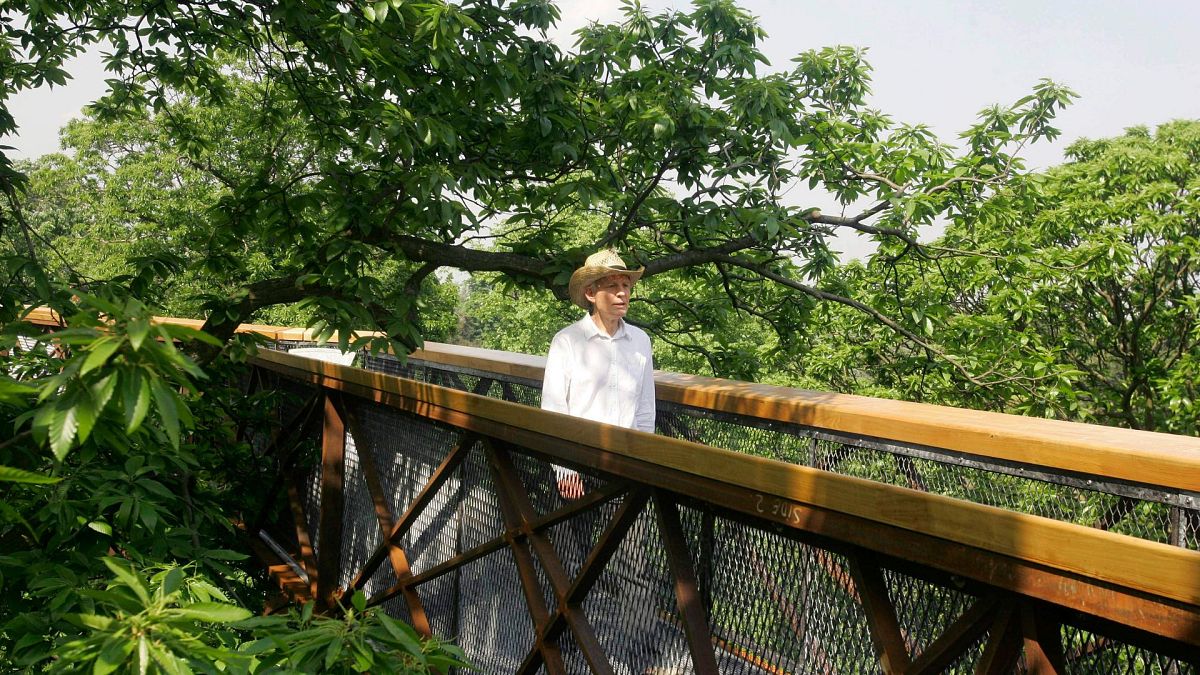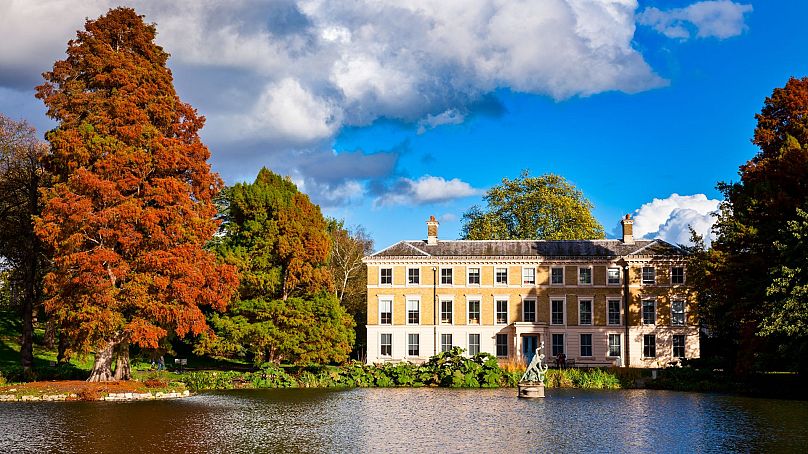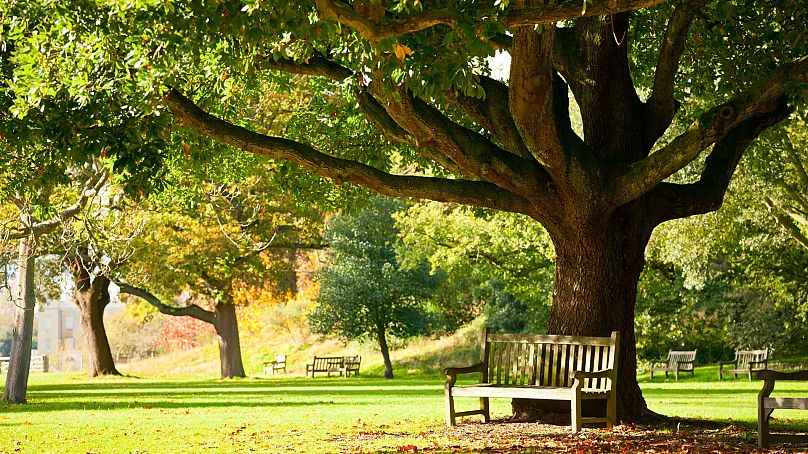The UK should turn to climate-resilient hybrid trees as temperatures rise, Kew Gardens advises.
Kew Gardens - a lush, green oasis on the outskirts of London - is listed as a UNESCO World Heritage site. But beneath the tree tops, trouble is brewing.
Back in 2022, a drought hit the region. It was also the hottest year on record in the UK, with temperatures soaring above 40 degrees Celsius in parts of the country.
Those punishing temperatures were bad news for the 130-hectare gardens' 11,000 trees
Water levels deep below the surface of the soil dried out, forcing some trees, more used to temperate climes, to shed their leaves.
Experts believe they lost around 400 trees as a result of that episode of extreme weather.
"A background rate of loss of trees here might be 20 to 40 in a year. We estimate we've lost as many as 400 since since that drought," says Tom Freeth, Head of Living Collection Support at Kew.
"The best way to think about it [is] in tree time: a storm happens over one night, it's quite clear what you've lost the morning after. This is like a much slower moving event than that because you have the drought, but then you continue to lose trees the year after and the year after that."
Spurred by that loss, scientists at Kew have been investigating how the trees will fare long term.
Half of Kew's trees could be vulnerable to climate change by 2090
Using new climate models, they have assessed how the plants will respond the rising temperatures and changing weather patterns.
The result is alarming: they believe up to 50 per cent of the garden's trees could be vulnerable to climate change by 2090.
There are around 2,000 species of trees here, but if mean annual temperatures rise, some will be pushed beyond their natural range.
"If we take the worst case prediction offered up by these globally available models it's going to get a lot hotter - up to four degrees, if we talk about mean annual temperature," says Freeth.
"It's not going to get much dryer in terms of annual precipitation. The pattern of that rainfall may become quite erratic. So where by the last 100 years we may have had predictable wet autumns, wet cold winters, wet springs, and maybe a dry summer, we might get really dry springs just on the random, and that will put all the trees or the plants on the back foot for the whole summer."
The results have been published in a new report called 'Planting the Future' released today (22 July).
Could rainfall lessen the impact of rising temperatures?
Since the study was completed, Kew scientists have investigated whether precipitation levels could mitigate temperature rises.
They now think rainfall could lessen the impact, but still predict up to a third of the trees could no longer grow here by the end of the century.
That includes some of the country's best-loved species.
"When we've done the research, it's as much as one third of this living collection is going to be at risk for climate change," says Kevin Martin, Head of tree collections. "And that includes some of our English natives like the oak, the beech, birch and holly. The English oak, for instance, that's going to really struggle. It needs a lot of moisture. We've done lots of tests on this tree now, and we know it's drought sensitive."
How can England's trees be saved?
The report urges the horticulture industry and urban planners to increase the diversity of trees and shrubs.
New types of plants may be required to keep the gardens - and South East England in general - green.
At Kew they are trying to identify which trees will be able to cope better with hotter temperatures and less predictable rainfall.
"So this is an example of what's going to become more common within the arboretum," says Martin, showing a sapling. "This is from the Steppe in Romania and it's extremely important, it's a hybrid between the common beach and the Oriental beach. Then this hybridisation hopefully will show some resilience in our future climate."
Botanic gardens globally hold 30 per cent of the world’s known plants, including 41 per cent of known threatened species.

















